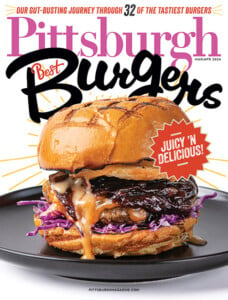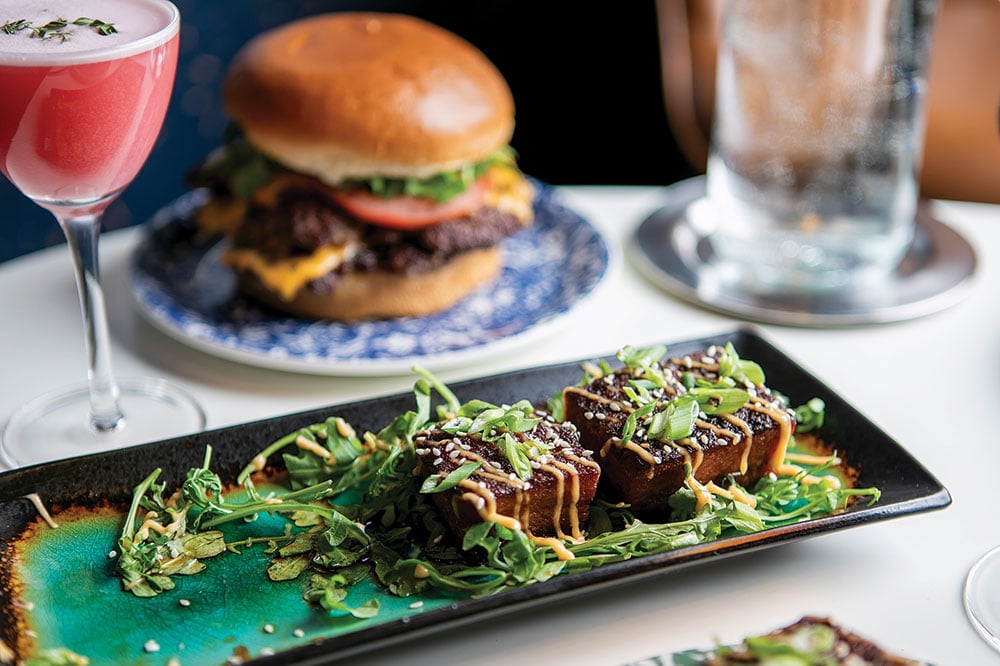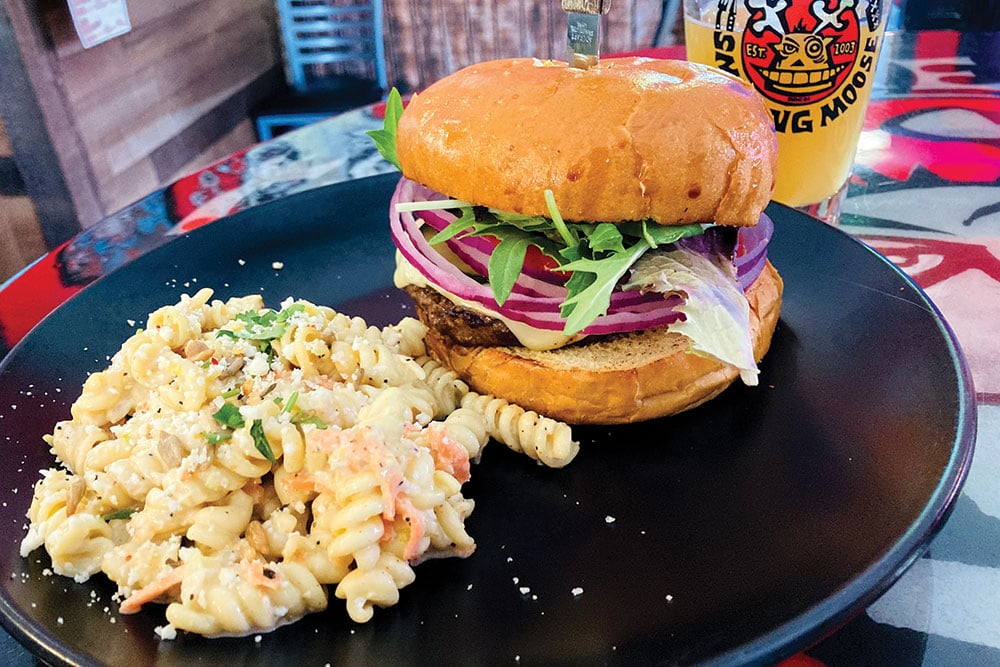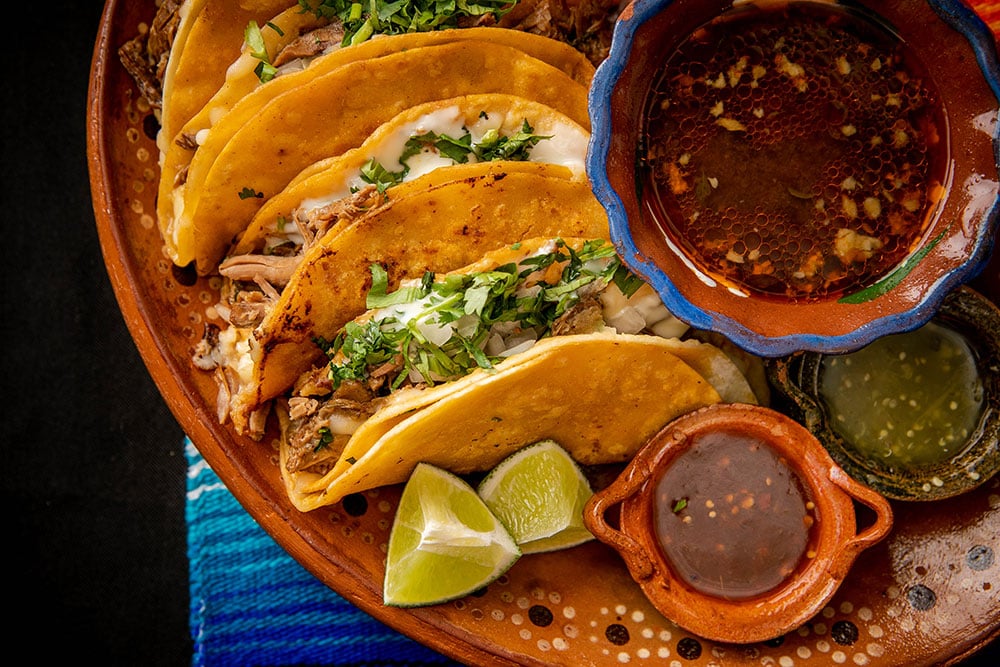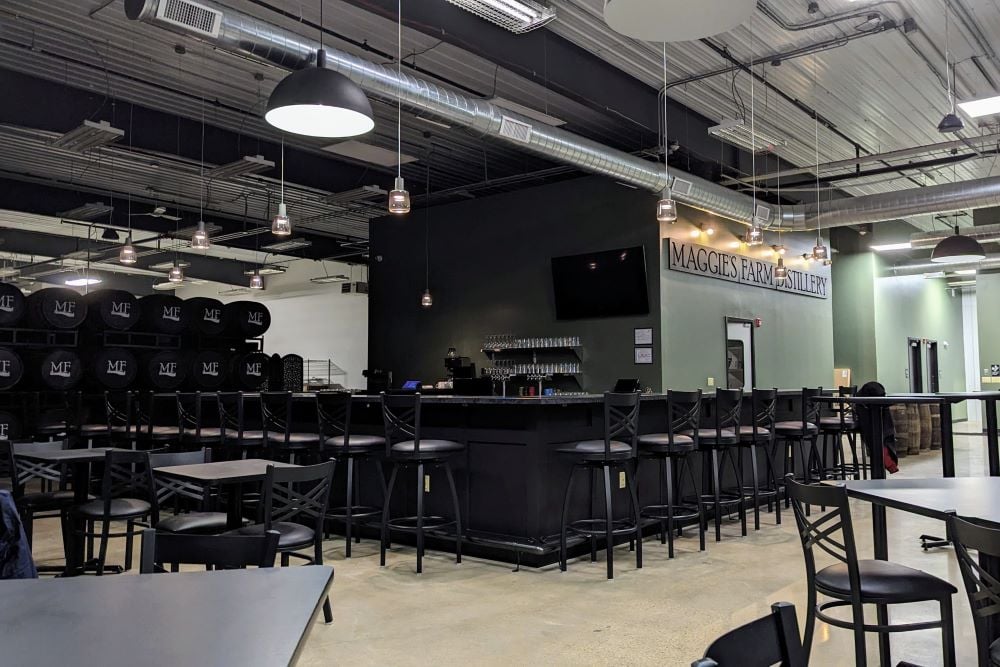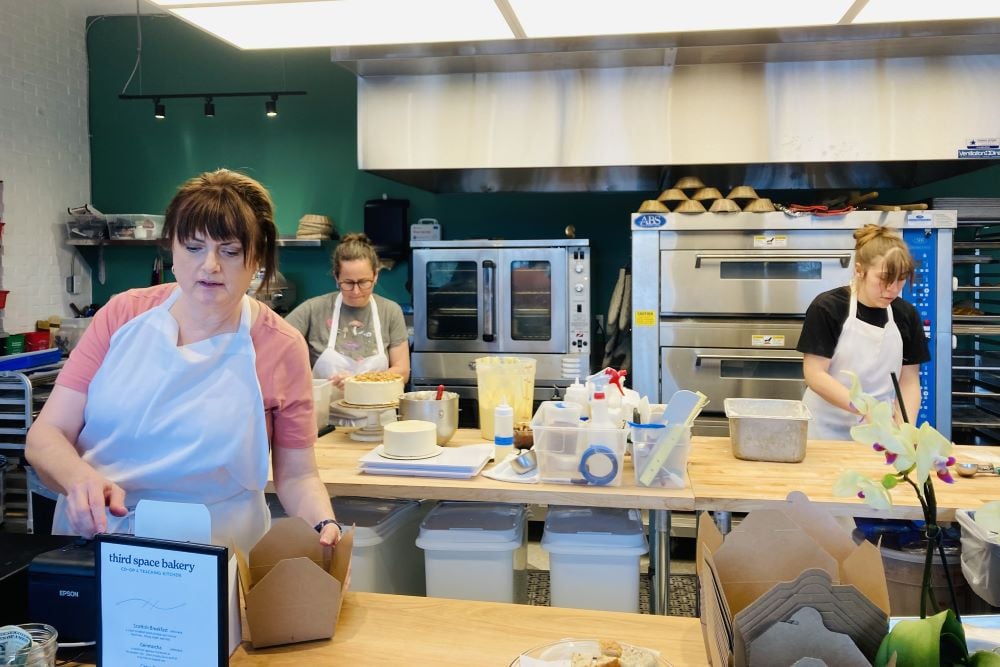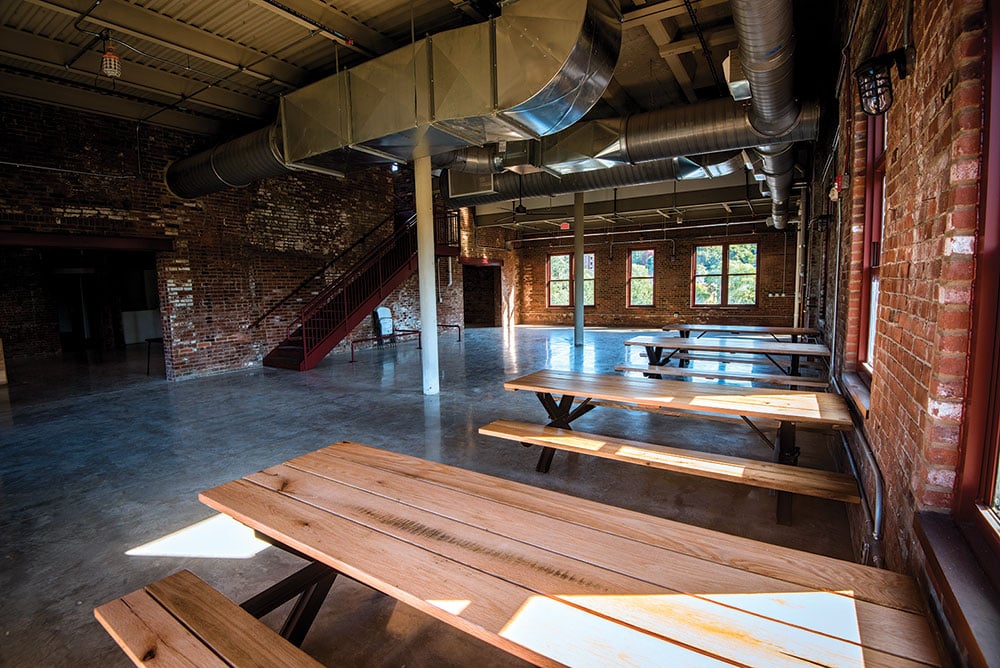Pittsburgh’s Unique Pizza Styles and Where You Can Get Them
For 75 years, the region's idiosyncratic pizzaioli have put their spin on what it means to make a pizza.
As much as people try to wedge a definition for “Pittsburgh pizza,” the truth of it is that we don’t have a signature city style.
There are a handful of pizzerias that often come up in conversations about Pittsburgh pizza. However, with due respect to long-standing establishments such as Aiello’s, Mineo’s and Fiori’s, what they deliver is typical of the mid-century coast-to-coast boom of the American gas-oven pie, which has a slightly thicker crust and, often, a sweeter sauce than you’d find in the legacy New York City deck-oven pie-and-slice joints from which that style was derived.
What’s endearing about our region is how idiosyncratic pizza makers have over the past 75 years put their spin on what it means to make a pizza. There are sundry pizza styles within an hour’s drive of Pittsburgh, each with a story.
Our pizza foundations were built in the 1940s and continued to blossom through the 1970s, the four decades that represent the heyday of widespread commercial regionalization of pizza in the United States. (Prior to that, establishments that sold pizza were almost exclusively limited to what food writer Ed Levine calls “The Pizza Belt,” which was centered in New York City and New Haven, and tendriled as far as Boston and Philadelphia.)
The migration of regional Italian foodways — and how newly arrived immigrants strove to feed a lot of people on a budget — set the framework. The return of GIs stationed in Italy during World War II, many of whom (particularly those with roots in the country) were smitten with the pizza sold in bakeries, spurred the boom, as did mid-century innovations in technology, especially the gas-heated deck ovens popularized by Bakers Pride and Mastro. The creative spirit of pizzaioli, who fused all of this to build businesses where they lived, is what made it last.
It all took place in an era predating the domination of chains such as Pizza Hut and Domino’s. And it’s made for some unconventional, delicious bites still delivered by the establishments that saw their way through the generification of pizza.
A CUT OF DICARLO’S PIZZA IN WHEELING. PIZZA WAS SO NOVEL WHEN BROTHERS PRIMO AND GALDO DICARLO OPENED THERE IN 1949 A NEWSPAPER ARTICLE HAD TO DESCRIBE WHAT IT WAS.
The Raw Story
The story of our region’s pizza begins in Steubenville in 1945 when a first-generation American named Primo DiCarlo opened his eponymous storefront on the city’s main street. DiCarlo had just returned from serving in Italy, and he had a vision.
“They would eat [a homestyle version of pizza] at home. When he was over in Europe, he saw they were actually selling it. When he got back, he thought it would be a great thing to try here. There was a big Italian community in Steubenville,” says his niece Toni DiCarlo. Her father, Galdo, joined his older brother in the venture.
They had the wherewithal to do it, too — their father, Michael, an immigrant from Sora, Italy, opened the first Italian bakery in the region in 1896.
The idea of selling that pizza was so new that when the DiCarlo brothers opened a second location in Wheeling, a 1949 News-Register article noted, “The brothers specialize in an Italian delicacy called Pizza, which has been called ‘the poor man’s cheese cake.’” Because hardly anyone knew what pizza was, the story goes on to describe it as “an Italian bread dough base garnished with a sauce of tomatoes, parsley and green peppers that’s seasoned with oregano, served with anchovies, cheese, pepperoni or mushrooms.”
The brothers DiCarlo were ahead of the game in many respects — not only was Primo DiCarlo granted the first license for a “pizzaria” in Ohio, but the family also introduced the idea of selling “by the slice” to the valley (and were among the earliest nationwide to sell pizza this way) and were one of the first to franchise. Their legacy is a regional style pizza that now extends from Steubenville to the southern entrance of the Fort Pitt Tunnel.
It’s How You Build It
It’s called Ohio Valley style, and it’s beloved by people who grew up eating it — but often is maligned by those who haven’t. That’s because its signature is a topping of uncooked, room-temperature cheese.
The style has been derided as Lunchables or a drunk person’s food (in fact, there is a pizza parlor in Oneonta, N.Y., that serves a cold-cheese topping specifically to help drunken college students eat it faster). But, the haters, many of whom judge from photographs and not by experience, are wrong. When it’s done right, Ohio Valley-style pizza is one of the tastiest types of pizza there is.
“I used to always say it’s kind of like a party in your mouth. You have so many different things going on, as opposed to everything fused together in a typical pizza. When you bite into a DiCarlo’s pizza, you get the full sensation of the pepperoni, the cheese, the sauce and then the crust. It’s all distinct,” DiCarlo says.
Ohio Valley-style is built on a crust similar to the “grandma” style brought to acclaim by the celebrated restaurateur Umberto Corteo on Long Island in 1965. Both come from the same place: the home kitchens of Italian women in the region between Rome and Naples. Thinner than the more widespread Sicilian and contemporary interpretation of grandma pizzas, the rectangular dough is baked crispy in pans. Ohio Valley-style sauce varies from place to place, though it’s typically a simple puree of tomato, seasoned with a little bit of bell pepper, oregano and olive oil. Some establishments cook the sauce; some, like DiCarlo’s, don’t.
Only once the pizza comes out of the oven is it topped with cheese, which almost always is hand-shredded Provolone; optional toppings such as pepperoni, olives and pickled hot peppers are also added at this time.
The rationale for adding the cheese and the toppings after cooking is murky. The conventional DiCarlo’s history alludes to the idea that the original pizzas took a long time to cook because the pans were heavy, so the cheese was added after cooking to prevent it from burning. Other people theorize that it was a deliberate culinary act all along. “I just know from growing up, that’s how we always did it,” DiCarlo says.
It’s How You Eat It
Of all the builds specific to the region, the Ohio Valley-style has the broadest reach. The DiCarlo family has spread the gospel of Primo and Galdo DiCarlo’s innovation far and wide. Primo’s side of the family, run by his grandson, also named Primo, owns two locations in Steubenville. Two of Galdo’s children handle the other side of the business: Toni DiCarlo owns three locations in West Virginia, and Anna DiCarlo is in charge of the franchises, which are located elsewhere in West Virginia as well as in Pennsylvania, Ohio and South Carolina.
Among the pizzerias that serve Ohio Valley style, Giannamore’s Pizza, Iggy’s and Ray’s are all near the Steubenville birthplace. Osso’s Original has a storied history in Washington County. Beto’s Pizza, on Banksville Road just two miles from the Fort Pitt Tunnel, is likely the spot best known to Pittsburghers; it’s the place that often evokes, “Oh, is that the weird thing they do at Beto’s?” when Ohio Valley-style is mentioned (indeed, Beto’s, which opened in the mid-1950s), is an offshoot of the now-closed third location of DiCarlo’s Pizza, which opened in 1952).
Just about everywhere you go, the pizza is handed to you in a cardboard box. You’ll know an Ohio Valley joint cares about the integrity of its product when even the cuts — that’s the preferred terminology for a slice — come in a box that’s folded over and held together with a rubber band or string. Exercise a moment of zen prior to your first bite, allowing the uncooked cheese a few moments to steam, transforming raw strings into a liminal state that coaxes the milkfat to begin to melt. This is important.
Here’s what you get: the airy, savory cracker crunch of the crust, a pop of bright, tangy sauce as it meets the pillowy top of the crust, and then the cool, elastic cheese. Skip the pepperoni, a product much better when cooked, but get an extra cut because you’re going to want one. You might as well; they typically cost about a dollar anywhere you go.
Both scions of the 75-year-old DiCarlo family business offer exemplary versions of the style — the downtown Steubenville location shines exceptionally bright in its adherence to the original vision — but my favorite version of the Ohio Valley pizza is found in Ambridge at Pizza House, which is better known as Police Station Pizza.
Sound the Alarm
According to Bill Cain, who worked at Police Station Pizza for 20 years prior to purchasing the business in June from Alex Burzese, Tony Dippolito founded the pizzeria in 1951, and his cousin (Al’s dad) Robert Burzese took it over in 1954. Al took the reins in 1984.
“The way we do it now is the old, long process,” Cain says. “But it’s not as ridiculously hard as it used to be. They didn’t have any mixers or anything back then for the dough.”
A typical day starts as early as 6 a.m., when Cain or one of his employees starts making sauce, which cooks for about five hours. “It’s a simple sauce. We don’t use much of anything. It’s whole tomatoes and a little bit of stuff, but that’s it,” he says.
The dough is made daily, proofed twice and then par-baked. It’s sauced and dressed with cheese before it’s baked a second time. Cain says he believes the cheese is another key to the success of Police Station Pizza. It’s a blend of three varieties of Provolone, and it’s finished with Romano. “There’s never any mozzarella. It’s too greasy for this kind of pizza,” he says.
It’s a symphony of movement once the shop opens for business at 4 p.m. Four employees finish 24-inch by 16-inch pans with room-temperature cheese from a large tub, as well as any additional toppings, when pulled from the oven.
Crispy, crunchy and airy, there’s a half-inch of loft to the dough, so you get a little bit of the soft tug where it meets the sauce at the top. It’s an exceptional tray pizza crust. The sauce is bright and tangy, and it melds the bridge between the multi-textured cheese. And here’s the real key — it’s not overdressed with cheese, which is the case at some of the other establishments (DiCarlo’s Steubenville is similarly restrained). It’s a true demonstration of the dignity of Ohio Valley-style pizza.
The early history of Police Station Pizza is partially lost to time, and it’s an open question as to whether the Police Station Pizza was an independent culinary creation. There isn’t any evidence or remembrance that Al Burzese or Tony Dippolito had any connection with the DiCarlo family, but it’s possible word of this style of pizza traveled the 35-mile journey from Steubenville. Two nearby institutions — the excellent D&G Pizza in Beaver Falls (which has a second location in Monaca) and Breezy’s Pizza in Aliquippa — trace their roots to Pizza House.
Cain says that Alex Burzese still works most mornings. And, even though Cain is the first non-family member to own the 70-year-old institution, nothing is going to change. “The only way I know how to do it is the way we do it now,” he says.
Up The Mon, A Red Top
Donora is the birthplace of baseball greats Ken Griffey Sr., Ken Griffey Jr. and Stan “The Man” Musial. It’s also the birthplace of a pizza style that may very well be unique to this curve in the Monongahela Valley — the Mon Valley red-top pie.
Anthony DiDonato, who co-owns Anthony’s Italiano with his wife, Theresa, believes he first made the pie in the early 1980s. It came about from discussions with his friend and former employer, Armand Forlini, who owned Armando’s Pizza from 1969 until he died in 2014 (Armand’s son Justin now runs the operation, which has locations in Charleroi and Monessen).
The two aimed to create a version of a Chicago-style, deep-dish spin called stuffed pizza popularized in the mid-1970s; it likely is a version of the northern Italian Easter pie, scarciedda.
However, DiDonato and Forlini didn’t travel to Chicago to try it, and information exchange between pizzaioli was much rarer in those days, so DiDonato says they created it themselves.
“The red-top is just something that was our version of a Chicago deep-dish pizza thing. I saw it on a program a long, long time ago. They put all the stuff in a pan, and I said, ‘we could do something like that but not in a pan’ because we didn’t have the right pans and our ovens were different,” DiDonato says. “I just threw one together with just cheese, and it tasted good, and that was it.”
It begins with an American gas-oven-style dough base — DiDonato makes dough every morning he’s open — stretched medium-thin. Next, a thick layer of cheese; DiDonato’s is a provolone and mozzarella mix he shreds and blends himself. Toppings, such as pepperoni or black olives, would be added at this time, too. A second crust, thinner than the first, is placed atop the cheese layer and crimped at the edge to the bottom crust. Finally, uncooked homemade sauce is ladled atop the pie. DiDonato bakes it for about 12 minutes in an ancient two-deck Bakers Pride oven he’s used since he opened his shop in 1977, then adds another layer of sauce as well as a sprinkle of Romano and Parmesan before it’s cooked for another three minutes.
The result is as if pizza and lasagna made some plans and pizza said, “Let’s meet partway.”
You get a soft-crisp crust at the bottom, with some of the tug of a New York gas oven pie. Then you get the cheese, which doesn’t have the fat cooked out like a traditional pizza, nor is it in a liminal state like the Ohio Valley style. It’s closest to what you might get in a perfectly made mozzarella stick. Then you get the second crust, which is thinner and adds a subtle layer of texture. The second application of sauce means you get a little bit of tang contrasting with the deeper flavor of a cooked sauce. Toward the edge, where the crusts are crimped together, you get the best bit, little ropes of cheese with wisps of sauce. It’s a delight.
DiDonato’s pies aren’t artisanal in the vein of a modern baker weighing heritage wheat to the gram and using precise hydration ratios. Yet there is an art in this handmade tradition invented just outside of Pittsburgh. The Mon Valley red-top found at Anthony’s Italiano is a pizza made by a pizza person; DiDonato, 65, started making pizza when he was 15, and he met Theresa, who started making pizza at 16, at Armando’s.
“Both grandmas were from Italy, but I don’t know where. They kept that side of the tradition away from me. They said, ‘You’re going to be an American boy, not Italian,’” DiDonato says. “But I love to make pizzas. I take pride in what I do. Every pizza I make is special to me. I put my heart into it.”
Justin Forlini carries on Armand’s part of the story at Armando’s, where their red-top pie now is cooked in a rotating oven rather than a thick-stoned gas classic. “We both make our versions, and each one is a little different,” DiDonato says of the place where he worked when he was a kid.
Up the hill, in a residential part of Donora, Marty’s Pizza, which opened in 1987, is also serving Mon Valley red-top. Marty’s offers a significantly more rustic pie than Anthony’s. When you talk about a pizza pie, this is the pie, weighing in at more than four pounds for a 12-inch. The bottom crust is very crunchy, the cheese has a photogenic pull, the top dough layer resembles something you’d encounter in a baked pasta dish and it’s topped with a thick sauce layer with a lot of oregano. It’s an affordable indulgence that’s worth seeking out.
The style remains nestled in the valley, though it should be spread far and wide.

JOHN SASSAK CONTINUES TO MAKE A STYLE OF PIZZA FIRST SERVED BY HIS GRANDMOTHER, COSAMINA NUZZACI. SHE STARTED SELLING TRAYS OF SPONGE PIZZA IN MONESSEN IN 1952.
Cushioned
On the lower floor of a white house with sky blue trim on a Monessen hilltop, John Sassak carries on a pizza tradition started by his grandmother, Cosamina Nuzzaci. “She made it up. She came over from Italy in 1922. She started mixing it in a washtub in 1952 when she opened the shop,” Sassak says.
Sponge pizza, as he calls it, is unique to the location (at least in this form). He keeps his grandmother’s original recipe, written on a brown paper bag, even though he can’t read Italian.
Sassak says the massive, rectangular loaf weighs approximately 15 pounds. It’s nearly 2 inches thick and is as if an Italian cook interpreted a southern dinner roll but made it into a loaf and crossed it with focaccia. Substantial and weighty, but not heavy. Soft, with just a very slight crunch on the bottom.
Sassak says, aside from the washtub, the process hasn’t changed through three generations of family ownership — his mom, Mary Sassak, ran the business from 1964 until 2002. John left work as a long-haul truck driver to take over the business when she passed away.
Nuzzaci’s sponge pizza, which is the only thing Sassak serves, begins with a 50-pound sack of flour, water, oil, yeast, sugar and salt. Sassak mixes batches of dough by hand, no electric contraptions involved. After a rise, the dough is weighed, patted into pans, risen again and baked. “I let it cool like a loaf of bread and then cook it a second time when it’s time to make the pizza,” he says.
Sassak’s sauce, which he makes several times per week, combines two kinds of tomatoes, onions, water, oil and sugar. Toppings are limited and placed under the layer of provolone and mozzarella. The trays are cooked in an 80-year-old Blodgett steel oven. He says the decades of seasoning, as well as the handcrafted construction of the oven, are part of what makes a Nuzzaci sponge pizza what it is. “It’s expensive to keep it going. But it wouldn’t taste the same with a different oven,” he says, noting that people who take par-baked ingredients home have a good result but say it isn’t quite like getting it from the shop.
It’s comforting. It’s $12. And it can feed a family. It also would work as part of a meal, perhaps with some hearty greens and beans alongside it. That speaks to the democratization of pizza; this handcrafted dish with a long history is still accessible to just about anyone.
How long that tradition will last at Nuzzaci remains up in the air. It’s a one-and-a-half person show; Sassak working full time and his wife, Patty, who works a full-time job elsewhere, helping him in the evenings. Although there is a large extended family, nobody seems interested in taking over the shop. And Sassak doesn’t intend to sell the family recipe or the store to anyone else. “It’s a shame to say, but nobody else wants it. I just bought a brand new Chevy. When I retire in seven years or so, that’s it,” he says.
Then again, he said the same thing in a Tribune-Review article — in 2010. “It feels really good to keep this family tradition going for all these years. As long as I’m having fun, I’m going to keep doing it,” he says.

CHEESE BELOW SAUCE HAS BEEN THE RULE SINCE THE DAY FRANK’S PIZZERIA OPENED. TODAY, ROBERT ALOE MAKES PIZZA THE SAME WAY HIS FATHER DID WHEN HE STARTED IN 1958.
A pie For Everyone
The pizza styles and their creators are peppered throughout the region.
There’s Jioio’s, the pizza with a flaky, almost pastry crust that’s drawn decades of speculation about the origins of its sweet flavor; it’s been a Westmoreland County staple since Fred A. and Elvira Jioio started serving pizza in 1951. Further afield in Youngstown, volunteers at St. Anthony of Padua Church popularized the Briar Hill pie, a round, pan pie ladled with long-cooked sauce, and topped with peppers and a smattering of Romano cheese. That pizza, with roots in the southern Italian region of Basilicata and the immigrant kitchens of Youngstown’s Briar Hill neighborhood, is still served once a week at the church (be sure to call ahead to order) as well as a few pizzerias in the area. And the innovation continues; last year, the Pabala family, owners of Peoples Indian Restaurant in Garfield, introduced pies with toppings that reflect the culinary heritage of the country they emigrated from years ago.
Back in Ambridge at Frank’s Pizzeria, Robert Aloe carries on his father Frank’s tradition of putting the cheese on before the sauce. It’s the way the Calabrese fisherman (he tried his hand at a fish shop and pastry business prior to opening a pizzeria) and his family have made it since he purchased a Mastro gas oven, a dozen pizza trays, a cutter and two peels for $600 in 1958. Aloe traveled to the Bowery in New York City to learn from the Mastros, and Robert Aloe says they told his father to put the cheese on first to create a bond with the crust, creating a crispy, cheesy bite with bright sauce. He’s been doing it the same way as his dad — same recipe, same flour, same yeast, same oven — ever since. “We’re always told we make pizza backward. But maybe the rest of them make it backward. We’re right, and they’re wrong,” says Aloe.
In an era when pizza is either generic or hyper-artisanal, these pizza makers carry on long-lasting traditions. Unlike many restaurants right now, none of these businesses are struggling; typically, the phone is ringing off the hook right at opening, and most ship nationwide to fans who miss their taste of home. They all are remarkably affordable, reminding us that good, handmade food can come at a reasonable price when simple ingredients are crafted with generational skill and supported enough by the community that they can sell a lot of it.
“It’s amazing. We’ve all survived so many different things,” says Aloe. “I don’t think my dad expected this to last as long as it did when he opened the business. What we do is becoming a lost art.”
